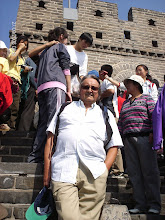


My first visit to Malta happenned in 1992. I strolled for long in Valletta, which has probably the biggest fortress in the world and is located in a really vintage point, at the tip of a peninsula in the middle of a bay with a very short way-out to the sea. I did the same in Mdina, the old capital in the middle of the island, inside another smaller fortress from where we can observe the sea in several directions. Malta is so much linked with wars, invasions and the likes that city-fortresses are indeed the main tourist attractions. Gozo, the second island in size, has also its walled city, Victoria, almost perfectly put in its middle.
Second visit was last Summer, a relaxed week with my dear wife, finnaly not so relaxed because we travelled a lot around, using the extensive buses services; they are the best way to mix with locals and are a real experience in themselves. I strolled again in Valletta, Mdina and Victoria, with a bonus comming from having taken a hotel in St. Paul's Bay - a mushrums-like location for foreign tourists.
The country has three World Heritage properties inscribed. No one misses of course one of the theree: the City of Valletta. The others, out of the rushing tourists paths, are the Hal Saflieni Hypogeum, in Paola, outskirsts of Valletta and the Magalithic Temples, seven in total, spread over the two islands, of wich we visited Gozo's two Ggantija temples and the Tarxien ones in Paola. As for the Hypogeum it was a matter of persistence and faith on fate. On arrival we were surprised to be informed it was essencial to pre-book well in advance ( maximum 10 visitors per hour!): the first visits were available ... fifteen days ahead, after our return. Unless you take a seat and wait for some possible no-show. We came the next day, waited and waited and my wife managed to go. We came again the following day and I managed too. My recommendation for anyone going to Malta: this Hypogeum is a real must, you feel going back four and a half millenia in time to understand how our ancestors were able to rig limestone blocks and build underground structures in a succession of floors.

Sem comentários:
Enviar um comentário